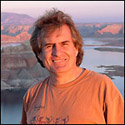Fine Art Composition: Top 15 |
Imagination is more important than knowledge. Knowledge is limited. Imagination encircles the world. - Albert Einstein

Badwater, Death Valley National Park, California
1 - Composition is the strongest way of seeing.
This is Edward Weston’s definition of composition and it is still my favorite definition.
2 - Composition is not just the placement of objects in the frame.
Composition also involves using color, contrast and light.
Composition includes post processing in the raw converter and in Photoshop.
3 - The goal of composition is to express your vision and your emotional response to the scene.
The goal of Fine Art Composition is not to create a documentary representation of the scene.
Nor is it to create a photograph that is only technically perfect.
The goal is to create an image that is superior, both expressively and technically.
4 – What the camera captures is objective. What the artist’s sees and feels are subjective.
Take stock of your emotional response to the scene in front of you.
Record those emotions in writing or in audio.
Use light, color, contrast, composition and cropping to reproduce these emotions visually.
Work on this not in the field and in the studio.
5 - Think first about light.
A photograph is only as good as the light you use.
The subject is less important than the light that illuminates this subject.
The best subject in bad light does not make for a good photograph.
6 - Use foreground-background relationships.
Find a great foreground and place it in front of a great background.
Make sure your foreground is large enough to play an important role in the composition.
7 - Contrast opposites elements.
Human beings think and see in terms of opposites.
Some examples of opposites: Static/Moving, Young/Old, Large/Small, Organic/Man made.
8 - Composing a photograph is not about redoing what someone else has done before.
If tempted to redo an image you have seen, just buy the postcard, the book or the poster.
You cannot be someone else, therefore you cannot take the same photographs as someone else.
You will waste time trying to do so.
Instead, start to create your own images right away.
9 – Being inspired and redoing someone else’s work are two different things.
You can certainly be inspired by the work of other photographers.
We have all been inspired by the work of other artists and photographers.
This is an inherent aspect of the artistic process.
10 - No amount of technology can make up for a lack of inspiration.
Cameras and other gears are technical.
Inspiration is artistic.
The two exist on different planes.
Achieving a Personal style in fine art means working as an artist not just as a technician.
11 - People, not cameras, compose photographs.
Certainly, a camera is a necessity.
However, your camera cannot compose a photograph anymore than your car can drive itself.
12 - "Correct" is whatever works when the goal is to create fine art.
There is no such thing as “the right thing” in art.
“What is Art ?” is a question to which there are many answers.
We, therefore, have to answer this question for ourselves.
We are also bound to disagree with others because fine art is a polarized activity.
13 - Straight fine art prints are a myth.
All fine art prints are a modification of the image recorded by the camera.
The composition of the image you started in the field is continued in the studio.
This is done through image optimization because colors, contrast, borders, image format, etc. are all part of composition.
14 – The “right” color balance is the strongest way of seeing color.
There is no such thing as the “right” color balance in fine art.
This is because color is one of the ways you express your emotional response to the scene.
For this reason, the “right” color balance for a specific image will differ from one photographer to the next.
15 – The finest compositions are those you never saw until you created them.
Recreating a composition you saw before is easy.
Creating a brand new composition, one you have never seen before, is difficult.
This is because doing so requires transforming the natural chaos into an organized image.
It involves creating order out of chaos, as Elliott Porter said.
Comments on NPN fine art nature photography articles? Send them to the editor. NPN members may also log in and leave their comments below.
 Alain Briot creates fine art photographs, teaches workshops and offers DVD tutorials on composition, raw conversion, optimization, printing, marketing photographs and more. Alain is also the author of Mastering Landscape Photography and Mastering Photographic Composition, Creativity and Personal Style. Both books are available from Amazon and other bookstores as well from Alain’s website.
Alain Briot creates fine art photographs, teaches workshops and offers DVD tutorials on composition, raw conversion, optimization, printing, marketing photographs and more. Alain is also the author of Mastering Landscape Photography and Mastering Photographic Composition, Creativity and Personal Style. Both books are available from Amazon and other bookstores as well from Alain’s website.
You can find more information about Alain's work, writings and tutorials as well as subscribe to Alain’s Free Monthly Newsletter on his website at http://www.beautiful-landscape.com. You will receive over 40 essays in PDF format, including chapters from Alain’s books, when you subscribe.